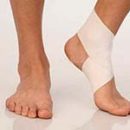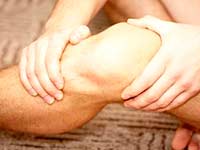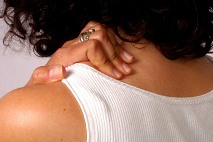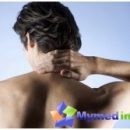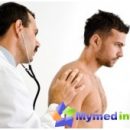Deforming osteoarthritis in most cases requires medical and social expertise (MSEK) to determine the group of disability. Disability during arthrosis is associated with a degree of violation of the static-dynamic function of the limb, which determines the ability of the patient to self-movement, self-service and work. Signs of osteoarthrosis are of secondary importance.
Content
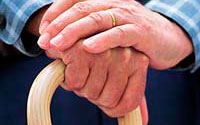 Deforming arthrosis — Perhaps the most common disease of the joints, leading to restriction, disability. The cause of disability during arthrosis is not even pain, crunch, blockade, stiffness and restriction of movements in the joint — These signs of osteoarthrosis have, rather, diagnostic value. In determining the group of disability, the degree of violation of the static-dynamic function of the limb, expressed in the ability of the patient to independently movement, self-service, work activity and social adaptation.
Deforming arthrosis — Perhaps the most common disease of the joints, leading to restriction, disability. The cause of disability during arthrosis is not even pain, crunch, blockade, stiffness and restriction of movements in the joint — These signs of osteoarthrosis have, rather, diagnostic value. In determining the group of disability, the degree of violation of the static-dynamic function of the limb, expressed in the ability of the patient to independently movement, self-service, work activity and social adaptation.
Who are sent to medical and social expertise — (MCEC) disability?
- Patients with rapidly progressive arthrosis of the joints, characterized by the appearance of pronounced radiological signs of osteoarthrosis for 3 years from the beginning of the disease, with frequent, more than three times a year, exacerbations of reactive synovitis and the presence of concomitant diseases.
- Patients after surgical treatment of osteoarthrosis that have disorders leading to a limitation of vital activity.
- Patients with pronounced violations of the static-dynamic function caused by disabilities.
Medical and Social Examination (IECE): Disability and its diagnosis
The definition of a group of disability during arthrosis includes several stages of examination
- Clinical and functional diagnostics, during which an analysis of complaints, the degree of severity of signs of osteoarthrosis, laboratory and functional results.
- Social diagnostics, including an assessment of the ability of a patient to self-service, independent movement, determination of its adaptation in a social environment and the degree of disability, as causes disability. At the same time, the psychological state of the patient takes into account, the presence of rehabilitation potential, the desire to return to normal life.
- Determining the needs of the patient in social assistance and protection.
Definition I, II, III Disability Group: Criteria
The first group of disability in osteoarthritis of the lower extremities
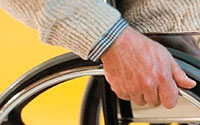 The main criterion for determining the first group with MACC disability is: complete loss of ability to independently move and self-service, work and training. Disabled I Groups need permanent care and assistance of strangers, because they cannot conduct independent existence, they cannot comply with hygiene, dress, take food, perform everyday affairs. Typically, the first group of disability is established with a pronounced violation of the functions of walking and standing, reflecting the signs of the deforming osteoarthrosis of the hip joint 3-4 degrees, ankylosis of the hip and knee, the ankle joint at a disadvantage.
The main criterion for determining the first group with MACC disability is: complete loss of ability to independently move and self-service, work and training. Disabled I Groups need permanent care and assistance of strangers, because they cannot conduct independent existence, they cannot comply with hygiene, dress, take food, perform everyday affairs. Typically, the first group of disability is established with a pronounced violation of the functions of walking and standing, reflecting the signs of the deforming osteoarthrosis of the hip joint 3-4 degrees, ankylosis of the hip and knee, the ankle joint at a disadvantage.
Second disability group with osteoarthritis of lower extremities
The second disability group is determined with a significant limitation of the ability to independently move and self-service, if necessary, the use of foreign aid or auxiliary means. Labor activity in such cases requires the creation of a specially equipped workplace, the help of other persons. Training is possible only at home or in special educational institutions. Most often, the II group of disability is established in the arthrosis of the hip and knee joint 3 degrees, the ankylosis of large joints at a disadvantage, shortening the limb to more than 7 cm, unfavorable quickly progressive type of the course of the disease, long and frequent synovite exacerbation.
Third disability group with osteoarthritis of lower extremities
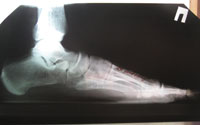 The criterion for establishing the third group of disability is a moderately pronounced or minor limitation of the joints of the joints, leading to the limitation of the ability of independent movement, self-service and labor. Overcoming a standard distance requires significantly more time, recreation stops. Self-service is possible only using auxiliary means. Labor activity becomes less productive, qualifications decrease, and in some cases it is lost at all. Sometimes the work by profession is impossible due to the presence of contraindications to certain activities. Training requires adherence to a special regime and assistance from other persons.
The criterion for establishing the third group of disability is a moderately pronounced or minor limitation of the joints of the joints, leading to the limitation of the ability of independent movement, self-service and labor. Overcoming a standard distance requires significantly more time, recreation stops. Self-service is possible only using auxiliary means. Labor activity becomes less productive, qualifications decrease, and in some cases it is lost at all. Sometimes the work by profession is impossible due to the presence of contraindications to certain activities. Training requires adherence to a special regime and assistance from other persons.
Causes of the establishment of the III group of disability: coxarthrosis and gonarthrosis of 2 degrees, combined deforming arthrosis of the lower extremities.
Patients with deforming arthrosis of 1-2 degrees with the defeat of one joint, slowly progressive the course of the disease, having persistent, but minor violations of the function of the joint, recognized working bodies. These are usually patients engaged in light physical and mental labor, not implying excessive joints on the joints.


